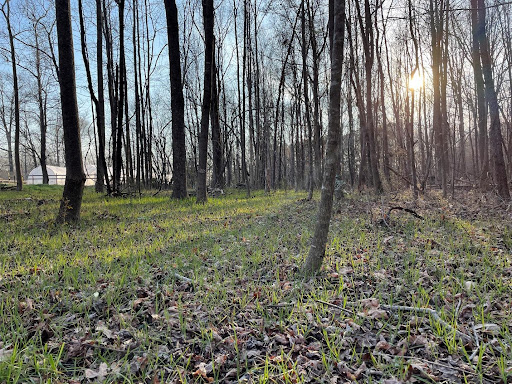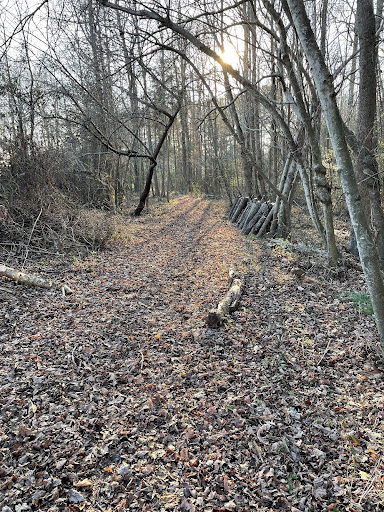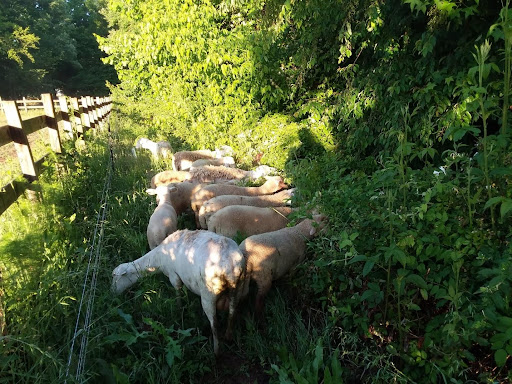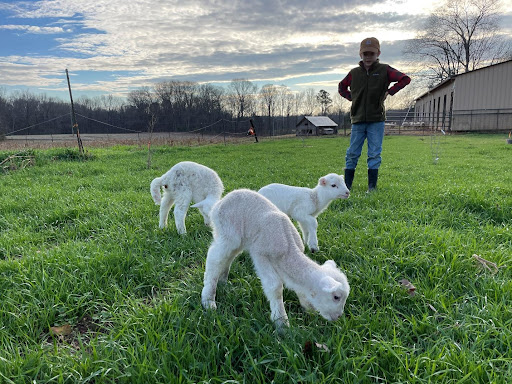by Gena Moore, CFSA Organic Research Coordinator | Tuesday, Apr. 5, 2022 —
 What is agroforestry? The USDA National Agroforestry Center defines it as ‘the intentional mixing of trees and shrubs into crop and/or animal production systems to create environmental, economic, and social benefits.’
What is agroforestry? The USDA National Agroforestry Center defines it as ‘the intentional mixing of trees and shrubs into crop and/or animal production systems to create environmental, economic, and social benefits.’
Odds are that you may already be practicing agroforestry on your farm without knowing it! Utilizing trees and shrubs on your farm can be a great way to enhance the environment, maximize under-used space, and bring in additional income. Mother Earth News recently published an article, “The Benefits of Agroforestry,” which gives a great introduction for anyone unfamiliar with the topic.
Agroforestry on My Farm

Last year my family began selectively clearing a few acres of wooded land in Monroe, North Carolina.
Our small flock of sheep, which you’ll see below, is 10 ewes strong and cleared underbrush while the chickens worked the soil.
We spent many hours hand-felling trees and creating mounds from the branches, which we later inoculated with soil to encourage decomposition. We coppiced trees for next year’s forage and even made a mushroom trail—a mulched path curving through our forest edge, flanked with several varieties of neatly stacked mushroom logs. Finally, we spread seed and crossed our fingers.
Practicing agroforestry helps my family achieve two of our farming goals:
- Use regenerative practices to improve the environment.
- Foster animal health.
Utilizing our sheep, we can create natural cycles to improve the soil. Also, allowing our animals to graze diverse forage and access ample shade provides multiple health benefits! Our attempt to utilize our wooded area was unique to our farm, our system, and our goals.
It is slowly becoming an integrated part of our system, but this was no accident. Our efforts began with research, learning, and plenty of planning!

Where to Start
The practice of agroforestry is just as diverse as the ecosystems it creates. Knowing where to start can be challenging due to the diverse nature of agroforestry and the array of online information.
One great place to start is the National Agroforestry Center, which has an online resources portal containing research and system-based information for a wide range of practices. The resources available include recorded webinars, fact sheets, and research publications. One topic that is thoroughly covered, and used by many farmers, is windbreaks or small wooded installations to protect your fields.
“The practice of agroforestry is just as diverse as the ecosystems it creates.”
In my work with CFSA, I frequently recommend buffers and windbreaks for organic farms. These installations can help avoid contamination of crops, improve surface water quality and provide habitat for wildlife and beneficial insects. Additionally, these installations can be profitable through plant choice by providing fruit or cut flowers and greenery for diverse farming operations. The resources provided by the National Agroforestry Center give great insight into how to implement and maximize these forest installations for both environmental and economic benefits. If you’re unsure how to start integrating trees and shrubs, consider implementing windbreaks, buffers, or hedgerows.
Silvopasture
Silvopasture, a specific agroforestry practice, is gaining popularity for its many benefits to the land and livestock. My farm has already benefited from integrating silvopasture and it’s been an exciting transition.
“Installations can be profitable through plant choice by providing fruit or cut flowers and greenery for diverse farming operations.”
If you’re looking to integrate livestock and trees, consider reading Silvopasture: A Guide to Managing Grazing Animals, Forage Crops, and Trees in a Temperate Farm Ecosystem by Steve Gabriel. It delves into specific practices that can be attributed to our Southeast region, no matter what type of livestock you have.
It’s lambing season for us now, and I find myself drawn to the wood line devising new fence placements, visualizing trees sprouting from our coppiced cuts, and genuinely excited to see our ewes and new lambs nibbling grass in the shade later this spring.
Forest areas and tree installations are rich with opportunity. I hope you will consider integrating a small piece of agroforestry into your own property!

Questions?
- Email the article author, Gena, at gena@carolinafarmstewards.org


